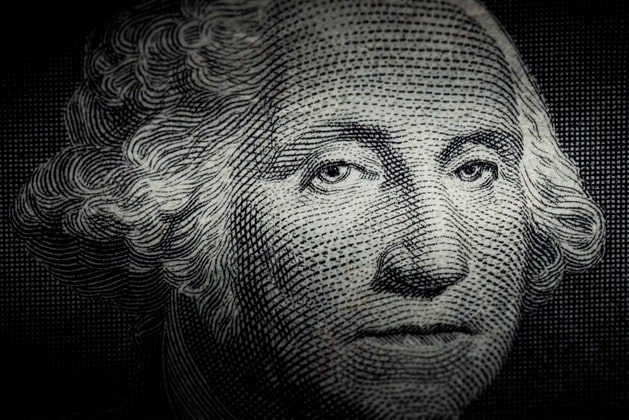差价合约(CFD)是复杂的工具,由于杠杆作用,存在快速亏损的高风险。80% 的散户投资者在于该提供商进行差价合约交易时账户亏损。 您应该考虑自己是否了解差价合约的原理,以及是否有承受资金损失的高风险的能力。
The Daily Fix: US election - key trading considerations ahead of November

Statistically, 90% of the time (since 1928) the incumbent will retain a renewed term in the White House if the S&P 500 is positive three months from the election – well that’s clearly in play, but is this time different?
It’s clear Trump continually pushes the message of higher asset prices, and the bar to opening the economy is low. However, when some 13.3m people are claiming weekly employment benefits, consumer confidence is weak and credit is not being extended through the banking channels, it’s apparent that the stock market stands in contrast to economic reality - promoting a higher stock market when the inequality gap is widening may not work as it once would have.
Another predictor that was used liberally, perhaps up until March that is, is Trump’s approval rating, and how it correlates with the USD.
In the chart below, I’ve used RealClear’s numbers, where (in the top pane) we see Trump’s job ‘approval’ rating relative to his ‘disapproval’ rating. While his approval is still 9.2 ppt below his disapproval rating it has bounced since July, as has his favourably vs unfavorable spread (lower pane). However, the interesting dynamic here is any bounce, which has also been replicated in his betting odds, has not recently resonated in any clear positive impact in the USD.
Top pane - Trump’s job approval rating - disapproval rating
Lower pane - Trump’s unfavorable rating - unfavorable rating
(Source: Bloomberg)
While there many other factors that are driving the USD right now, we can now question if the market still views a Biden win as clear cut bearish as they once did - say up until March where we’ve seen solid evidence of the DEM’s commitment to deficit spending.
Trading the election
The fact is we can look at as many indicators as we want. Polls, bookmakers odds, approval ratings and pundits’ views, but trading the event is just not as binary as many anticipate - Are elections ever that simple anyhow?
Cast our minds back to 2016 – there were many who called the Trump win, although they were in the minority, yet even those who correctly called it were mostly in agreement that risk assets were expected to be destroyed if Trump won. Few would have had predicted we would see the S&P 500 rally 26% through to January, starting literally the moment Trump delivered his victory speech and ‘sounded presidential’. It's plausible to believe the same could be true this time around, that being, we get the right result, but the reaction is wholly different than many expect.
Take, for example, the long-held belief that a Democrat government would result in the US facing a relative loss of international competitiveness, which would have international money managers reviewing their allocation to US asset exposures – this is one reason why the USD had seen an elevated relationship with Trump’s odds and approval/disapproval rating – considerations like the Biden raising the corporate tax rate to 28%, declaring an end to shareholder capitalism, changes to tariff rates, healthcare, energy policy, and increased regulation. They all have long been considered a sizeable USD negative and offer reason enough to hedge USD exposures.
But is it as black and white now??
The fact is it is just not that simple to answer, especially with the market no longer punishing currencies whose government run massive deficits – with inflation in check and interest rates at rock bottom levels capital gravitates to the country with the best relative growth prospects – it’s all about relative growth, so if the government is spending then that currency will outperform.
So, the strength of the government and its ability to pass legislation is one major factor here and a ‘strong’ government, regardless if red or blue will likely be a USD positive. It’s not just a function of one party getting the House (and the White House), but the race to the Senate is crucial too. A potential ‘Blue Wave’ (i.e. the DEM’s getting both chambers of Congress) would most likely be taken as USD positive in my opinion, which goes against conventional wisdom, but the reaction would be similar under a ‘Red Redux’.
The ease at which future policies can be passed is key for growth, so a split Congress, as we saw under Obama just leaves the economy in a state of flux. Nothing will pass into law.
Can we be guided by external agencies?
At this point, the betting markets (such as Predictit) have the Dem’s well ahead in the race for the House, and favourites also for the Senate. While Superforecastor puts a 66% probability the DEM’s taking both chambers.
We’ll know more and have a clearer idea as we head into three live Presidential Debates (29 Sept, 16 October and 23 October) and traders will monitor potential voting trends in the key swing states – Arizona, Florida, Iowa, Maine, Michigan, New Hampshire, North Carolina, Ohio, Pennsylvania, Texas and Wisconsin. Given the market has been so poorly served by-polls in recent political events many in the market may well wait until post the TV debates to firm up convictions before putting on speculative trades.
I would also argue that we’d see increased hedging activity, but a look around the options markets at the volatility term structure of the VIX, rates or FX vols and it seems every man, women and child has bought volatility into late October/November, so everyone has hedged themselves to the hilt through optionality – I’ll touch on this in future notes.
Upper pane – USDJPY 2m implied volatility (IV) – 1-month IV
Lower pane – USDCNH 2m implied volatility – 1-month IV
(Source: Bloomberg)
Timing is potentially the most important consideration
Another key consideration is the timing of the result. In 2016 Trump was declared the winner at 02:29 am local time the day after polling closed. In 2012, Obama knew he would get a second term at 23:38 local, so markets didn’t have to wait long to react and price certainty. As the polls were released, we could manage open exposures effectively and efficiently – life was simple.
With the fear of COVID-19 still firmly gripping the public psyche, postal voting will play a far greater influence on voting trends this time around. So, understanding exactly when the market will have a realistic understanding of whether one party will get the 270-seats required to gain control of the House is something everyone will have to contend with. It may be a matter of days, if not longer, until the true result is known, and this is especially true given some of the swing states, with high Electoral College seats, have significantly high postal voting intentions.
Also consider, that numerous research studies have shown that a greater proportion of those who intend to place postal votes will likely vote Democrat, so there is a risk markets could be thrown around with the perception of a victor changing sporadically.
We then need to consider a contested election. If there is a large percentage of postal votes, and the outcome proves to be close, it seems incredibly likely that the losing entity will contest the outcome. One can cast their mind back to 2000 and the Gore vs George W. Bush contest, when the outcome was delayed by a month due to just one state (Florida) having a legal challenge. Consider the brittle social fabric of the US and whether rising tensions at a political level spills over into civil unrest, especially if one party suggests another has had an unfair advantage.
Pricing risk is our job as a trader
There are too many angles to focus on, but one thing is clear: our ability to price risk will be tested to the maximum. Our ability to cut through the noise and understand not just how the USD, gold, and equities etc trade into the election as new polls are released - that will be hard enough - but the period from when exit polls are released through to the outcome (whenever that is) could be wild. Then when we understand the make-up of Congress, what will be the correct reaction to the fact in markets.
One thing is clear – it's not just the Fed these days that are the ultimate price maker of markets, and fiscal is as powerful, and in some capacity more so - so the election matters for markets. The hard part, as always, is trading it and this is where having an open mind and losing all form of ego will hold us all in good stead.
Related articles
做好交易准备了吗?
只需少量入金便可随时开始交易。我们简单的申请流程仅需几分钟便可完成申请。
此处提供的材料并未按照旨在促进投资研究独立性的法律要求准备,因此被视为市场沟通之用途。虽然在传播投资研究之前不受任何禁止交易的限制,但我们不会在将其提供给我们的客户之前寻求利用任何优势。
Pepperstone 并不表示此处提供的材料是准确、最新或完整的,因此不应依赖于此。该信息,无论是否来自第三方,都不应被视为推荐;或买卖要约;或征求购买或出售任何证券、金融产品或工具的要约;或参与任何特定的交易策略。它没有考虑读者的财务状况或投资目标。我们建议此内容的任何读者寻求自己的建议。未经 Pepperstone 批准,不得复制或重新分发此信息。

